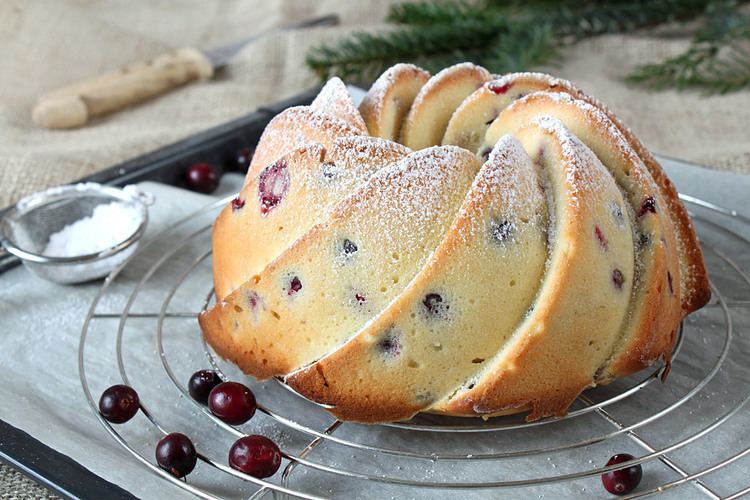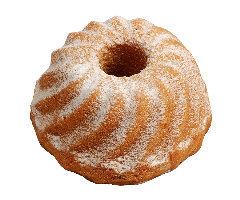Type Bundt cake | ||
 | ||
Alternative names Gugelhopf, Guglhupf, Kugelhopf Similar Kolach, Muffin, Buchteln, Marble cake, Stollen | ||
Gugelhupf bakeclub
A Gugelhupf (also Kugelhupf, Guglhupf, Gugelhopf, and, in France, kouglof, kougelhof, or kougelhopf) is a light, yeasted marble cake, traditionally baked in a distinctive circular Bundt mold. It is popular in a wide region of Europe, including southern Germany, Austria, Switzerland, Poland and Alsace.
Contents
- Gugelhupf bakeclub
- Der gute alte gugelhupf so bereit man ihn klassisch zu
- Etymology
- The pastry
- Gugelhupf pans
- References

In late Medieval Austria, a Gugelhupf was served at major community events such as weddings, and was decorated with flowers, leaves, candles, and seasonal fruits. The name persisted through the Austro-Hungarian Empire, eventually becoming standardized in Viennese cookbooks as a refined, rich cake, flavored with rosewater and almond. Many regional variations exist, testifying to the widespread popularity of the Gugelhupf tradition.

The Gugelhupf was the sweet chosen to represent Austria in the Café Europe initiative of the Austrian presidency of the European Union, on Europe Day 2006.

Der gute alte gugelhupf so bereit man ihn klassisch zu
Etymology

The old South German name combines the Middle High German words Gugel derived from Latin cucullus, meaning hood or bonnet, and "Hupf", which literally means "to hop" or "to jump". The Brothers Grimm wrote that the "hupf" may be a reference to the "jumping" of the dough caused by the yeast, but no firm etymological evidence exists for this. The earliest known Gugelhupf recipe, in Marx Rupolt's 1581 cookbook, describes a "Hat Cake" with the distinctive shape and ornamentation recommendation, suggesting a similarity or intentional imitation of the shape of a medieval hat.
It is spelled kuglóf in Hungarian, kuglof (Cyrillic: куглоф) in Serbo-Croatian and Macedonian, Kugelhopf in Alsatian, kouglof in French and guguluf in Romanian. In Western Slovenia, it is also known as kuglof, and in Central and Eastern Slovenia, kugluh.
In Upper Austria it is known as Wacker or Wacka. It is called bábovka in Czech and Slovak, and babka in Polish. In Slovenia, the standard word is šarkelj.
The American Pennsylvania Dutch preserve the Gugelhupf tradition, referring to it as Dietscher Kuche (German Cake).
The pastry
Gugelhupf is made with a soft yeast dough, baked in a high, creased, toroidal pan. It is sometimes made with dark chocolate dough to create a marbled interior, or accented with raisins, almonds and Kirschwasser cherry brandy. Some regional varieties (Czech, Hungarian and Slovak) are filled with a layer of sweetened ground poppy seeds.
Gugelhupf pans
The special circular pan with a central tube was originally made of enameled pottery.
Similar pans are used for making Bundt cakes, a cake baking pan shape in the US derived from the Gugelhupf.
